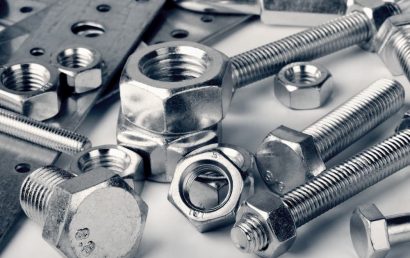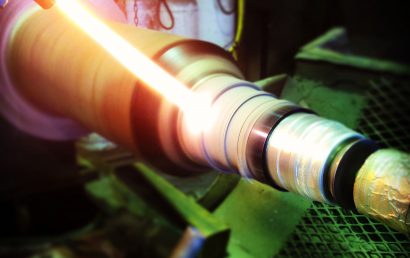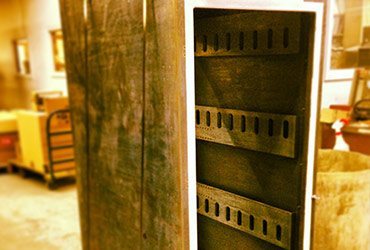Combat Erosion And Corrosion To Maximize Pump Efficiency
The efficient and reliable operation of pumps is required by industrial processes throughout the world. But erosion and corrosion threaten those operations on a daily basis. The newest coating technologies and pump designs, however, are providing hope through significant improvements being made affecting today’s industrial pump long-term performance. By minimizing erosion and corrosion effects, running costs can be reduced and productivity can be enhanced.
Cavitation
Circumstances resulting from pressure difference causes cavitation, usually seen on the pump impeller or pump housing. Instead of attempting to reduce cavitation’s effects on equipment, it’s better to stop cavitation in its tracks. That can be done several ways:
- Decrease the NPSHR (net positive suction head required)
- Lower the temperature of the fluid
- Increase the suction head
If you simply can’t avoid cavitation, a protective coating system might be of use.
Corrosion – Erosion
The fluid chemistry and type of substrate can determine the complex degradation mechanism in this situation, where both corrosion and erosion are present. Most often, the only true solution to this problem is surface protection.
Erosion
Particularly in the case of high flow velocities, significant levels of erosion can be experienced in pumps that transfer abrasive substance carrying fluids (i.e., sand). The injection pumps employed by the gas and oil industry are a prime example. High working pressures and the abrasiveness of the particles within the fluid used in the situation join together to compound the issue of erosion. The most practical solution in these applications is coatings with high erosion resistance.
Corrosion
A chemical reaction between the fluid passing through a pump and the component surface is referred to as corrosion. There is a distinction between localized corrosion (i.e., crevice corrosion or pitting) and uniform or general corrosion. Localized corrosion occurs most often on metals forming oxide layers. Uniform corrosion most often affects non-stainless materials.
Corrosion That Is Flow Accelerated
FAC (flow accelerated corrosion) refers to the removal of a metal’s protective oxide layer. This processes’ speed can be affected by the chloride content (to some extent), the flow velocity, and by the oxygen content. FAC can be prevented or reduced by a calcareous layer formation from certain waters’ high carbonate hardness.
Applications
At some point, a pump will be included in nearly every liquid involving industrial process. A vast range of tasks must be performed by pumps in every industry from DNA sequencing to deep-sea oil and gas. Every pump, regardless of its size or design, most run efficiently and reliably. Today’s modern industry demands lower running costs and less downtime.
Particularly challenging is the continuous threat from erosion and corrosion of pumps forced to operate in harsh environments. Frequently, these are large industrial pumps. In addition to protecting these pumps against the elements, a pump refurbishment program is being researched and developed to provide more cost-effective options.
Does your industry experience repeated problems with erosion or corrosion? Is the efficiency of your pumps (or some other machine or component) being compromised because of those problems? A&A Coatings can assist you in protecting your pumps, machines, components, and products from the harsh effects of wear, corrosion, and other damaging situations. Contact us today to find out how thermal spray protective coatings are already being used in your industry, and how we can be of assistance to your business and help protect your bottom line.



